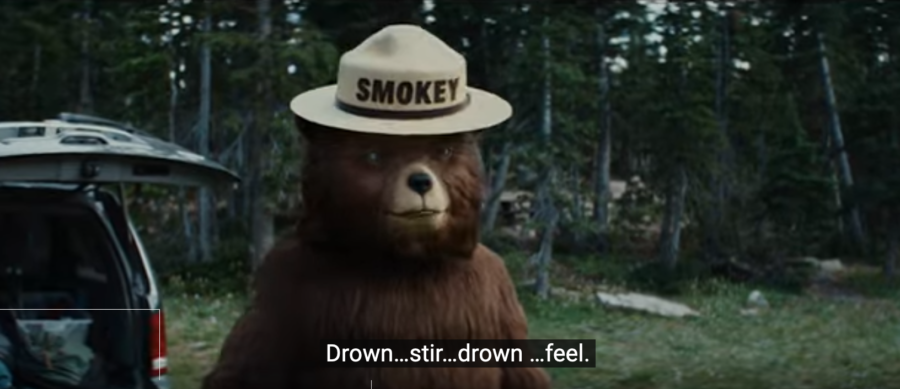“Don’t want to start a wildfire, right?” are the last words in the USFS’s latest advertisement featuring Smokey Bear. Well, sort of.
While Smokey Bear does make an appearance, it’s not as a tangible being. Instead, Smokey seems to have become an omnipresent entity that can take over the bodies of humans in order to tell others how to not start wildfires.

The “Smokey Is Within” ad campaign shows the spirit of Smokey taking over two women: one attending a camp outing telling her friends how to properly douse a campfire, and another hiking on the side of a road who instructs a driver on how to not drag his trailer’s chains.

Numerous boreal forests across the U.S. are still reckoning with Smokey’s legacy of fire suppression. Forest managers, including the USFS itself, have confirmed that a century of fire suppression is the root cause of the increased fuel loads and more intense wildfires we see today.
However, the vast majority of wildfires are still caused by humans — often in exactly the ways demonstrated in the advertisements. Smokey’s pivot toward personal responsibility, rather than bashing a living history of prescribed fires, might be a step in the right direction for the problematic bear.
You can watch the two new ads [HERE] and [HERE].

Confirmed? Confirmed how?
“Forest managers, including the USFS itself, have confirmed that a century of fire suppression is the root cause of the increased fuel loads and more intense wildfires we see today.”
I disagree. A drift away from scientific based forest management, which includes timber harvesting as a component, is the primary factor. Emotion based decisions got us where we are today.
Smokey’s message has changed little over the years, and has always been about prevention, not suppression.
Bob Smith, that is incorrect.
Hi Kelley! As to this “Changing Mile”-type photo pair, could you explain the ways in which the latter is superior to the former and vice-versa?
Hello, Hunter! Thank you for the link. This idea goes back with me at least as far and 1970 when I first met Jack Reveal, who revealed that he had gotten “religion” after a long career of being a burnt out “Smokey.” We worked together on the Fire Hazard Reduction and Open Space Management Task Force I put together as the Kitchen Creek Fire was not quite out. That was the biggest fire in the history of the Cleveland; we all know how that record has been broken. I also knew one of the anthropologists who had “collected” stories about Native American burning and was part of that aspect of the “let it burn” movement. I believe some of the “evidence” on such burning was anecdotal and misinterpreted, but it seems that the truth will never be known. The testimony of folks like Richard Henry Dana, back up the fact that fires were observed from ships a few hundred years ago, and the presumption was the “savages” were responsible. I can’t prove that they weren’t, but I continue to maintain the posture of “suspension of judgment,” until I can come to an honest conclusion one way or the other. I am always open to new evidence. Bob’s remark that “The lack of forest thinking and harvesting the last 40+ years is more the cause now. I would like to see more evidence of both.”
To tell you the truth, however, I am skeptical of burning and “thinning,” especially the latter. I have been on some Rx burns as well as fires that could be said to mimic Rx burning, and recognize the benefits of removing flash and flame-front fuels (<0.5" dia) to prevent laddering; I also have been burnt by pitch balls from firs blowing off like a Roman Candle and fought the spot fires they created unbeknownst to resting crews (fully contained) right above them. Realize, however, that burning and thinning tend to let in light and release nutrients as well as stimulation of germination and the regrowth of flame-front fuels, often in greater volumes and contexts than existed before, and they do so the following growing season.
I have also actually worked in virgin forest. How, I wonder, did they possibly escape the attention of the Native Americans for hundreds of years? These were closed-canopies with long-dead suppressed primary succession stuff as "understory," with the lowest limbs shaded out.
One can always cherry-pick cases; that is true to support either argument. Frankly, I suspect the best and most cost-effective strategy will be a combination of both. I wouldn't want to work for "true believers" on either "side."
As to Native American's (like my grandmother), one of the things I love about them is their sense of humor and pranking. They may well have "set the woods on fire," (thank goodness), but only in the high-spirited sense of the figurative. My grandmother was a beautiful gal. I suspect that they might well have set the grass of fire–under controllable conditions.
As far as this discussion goes, we all should follow the rules–and then some, but then "Neeverr forget, lads and lassies, 'tis frriction's brrisk, rough rrub that pr'vides the vital spark!" (Author forgotten.)
Happy burning where it really needs it, and thank you for defending the defensible space.
Please correct me with evidence and correct my typos and errers . . .
This 100 year suppression argument has become tedious. The lack of forest thinking and harvesting the last 40+ years is more the cause now.
Hello, W! Thank you for the comment. I hyperlinked the USFS’s meta study in the piece regarding increased fuel loads and wildfire frequency. Here is a direct link to it: https://www.fs.usda.gov/rm/pubs_other/rmrs_2007_donovan_j001.pdf
Please cite the amount of supposed increase, and the scientific foundations for the conclusions. Any such broad pronouncement should include hard data on ALL relevant factors, including weather, full reporting of structure fire ignitions, and the influence of structure fires on both wildland and structure fire spread, burn time and temperature per unit time . . .